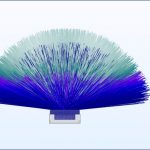Consultation Questionnaire Exemption No. 4(f) of RoHS Annex III
(UV Consulting statement)
Current wording of the exemption:
Mercury in other discharge lamps for special purposes not specifically mentioned in this Annex
Requested validity period: Maximum (5 years and 7 years (cat. 8 and 9) respectively)
Acronyms and Definitions
UV – Ultra Violet
LED – Light-Emitting-Diode
Hg – Mercury
LEU – LightingEurope
1. Introduction
1.1. Background
Bio Innovation Service, UNITAR and Fraunhofer IZM have been appointed[1] by the European Commission through for the evaluation of applications for the review of requests for new exemptions and the renewal of exemptions currently listed in Annexes III and IV of the RoHS Directive 2011/65/EU.
VDMA and Lighting Europe submitted requests[2] for the renewal of the above-mentioned exemption. The request has been subject to a first completeness and plausibility check. The applicant has been re-quested to answer additional questions and to provide additional information, available on the request webpage of the stakeholder consultation[3].
The stakeholder consultation is part of the review process for the request at hand. The objective of this consultation and the review process is to collect and to evaluate information and evidence according to the criteria listed in Art. 5(1)(a) of Directive 2011/65/EU.[4]
To contribute to this stakeholder consultation, please answer the below questions until the 27th of May 2021.
1.2. Summary of the Exemption Request
According to VDMA: “The application for prolongation of the existing exemption refers to mercury-containing UV discharge lamps which are used for curing (e.g. of layers of inks and coatings, adhesives and sealants), for disinfection (e.g. of water, surfaces and air) and for other industrial applications (surface modification, surface activation) The application includes the following lamp types:
-
- UV medium-pressure discharge lamps (MPL) for curing, disinfection and other industrial applications (internal operating pressure > 100 mbar). The UV medium-pressure lamps can be doped with iron, gallium or lead in addition to the mercury they contain.
- UV low-pressure discharge lamps for special purposes in the high power range. […]
Typical applications to be covered by this application include curing, e.g. of inks and coatings, disinfection of water etc., and other industrial applications like surface activation and cleaning.
It is technically not possible to replace mercury in special UV lamps with other materials/chemicals in order to achieve the same widespread radiation distribution. LED-based technologies are increasingly being used, which in certain applications (e.g. curing) also offer many advantages over mercury-containing UV lamps. Nevertheless, LED technologies cannot be used as an equivalent replacement in many applications. ”
According to LightingEurope, “[…] The renewal application concerns lamps and UV light sources defined as:
-
- High Pressure Sodium (vapour) lamps (HPS) for horticulture lighting,
- Medium and high-pressure UV lamps for curing, disinfection of water and surfaces, day simulation for zoo animals, etc…
- Short-arc Hg lamps for projection, studio, stage lighting, microlithography for semiconductor production, etc…
Replacement of mercury and mercury containing lamps is impracticable:
-
- The lamps covered by exemption 4(f) must remain available on the EU market:
- For new equipment for certain applications where no functionally suitable alternatives are available
- As spare parts for in-use equipment as replacing end-of-life lamps avoids having equipment become electronic waste before due time”
- The lamps covered by exemption 4(f) must remain available on the EU market:
Questions
1. VDMA and LightingEurope2 requested the renewal of the above exemption for the maximum validity periods with the same scope and wording for all EEE of cat. 3 and 5 (VDMA) and cat. 1-10 (LEU).
a. Please let us know whether you support or disagree with the wording, scope and re-quested duration of the exemption. To support your views, please provide detailed technical argumentation / evidence in line with the criteria4 in Art. 5(1)(a).
b. If applicable, please suggest an alternative wording and duration and explain your proposal.
We agree to push for the exemption, and we would like to phrase same wording as the IUVA, see below the questionnaire part.
2. Please provide information concerning possible substitutes or elimination possibilities at present or in the future so that the requested exemption could be restricted or revoked.
a. Please explain substitution and elimination possibilities and for which part of the ap-plications in the scope of the requested exemption they are relevant.
See IUVA explanation below.
b. Please provide information as to research to find alternatives that do not rely on the exemption under review (substitution or elimination), and which may cover part or all of the applications in the scope of the exemption request.
See IUVA explanation below.
c. Please provide a roadmap of such on-going substitution/elimination and research (phases that are to be carried out), detailing the current status as well as the estimated time needed for further stages.
See IUVA explanation below.
3. Do you know of other manufacturers producing devices of comparable features and performance like the ones in the scope of this exemption request that do not depend on RoHS-restricted substances, or use smaller amounts of these substances compared to the applications in the scope of this exemption?
See IUVA explanation below.
4. As part of the evaluation, socio-economic impacts shall also be compiled and evaluated. For this purpose, if you have information on socioeconomic aspects, please provide details in respect of the following:
a. What are the volumes of EEE in the scope of the requested exemptions which are placed on the market per year?
b. What are the volumes of additional waste to be generated should the requested ex-emption not be renewed or not be renewed for the requested duration?
c. What are estimated impacts on employment in total, in the EU and outside the EU, should the requested exemption not be renewed or be renewed for less than the re-quested time period? Please detail the main sectors in which possible impacts are expected – manufacturers of equipment in the scope of the exemption, suppliers, re-tail, users of MRI devices, etc. In the section UVC mercury lamp manufacturing and OEM equipment manufacturing using UVC mercury lamps – the impact of job loss and unemployment will be significant in the thousands of employees if no exemption could be achieved.
d. Please estimate additional costs associated should the requested exemption not be renewed, and how this is divided between various sectors (e.g. private, public, industry: manufacturers, suppliers, retailers).
5. Any additional information which you would like to provide?
–> we would like to support the IUVA statement see below.

27 May 2021
On behalf of the IUVA Board of Directors, this letter is submitted in support of the submission by Lighting Europe and VDMA concerning mercury containing bulbs.
IUVA is a non-profit dedicated to the advancement of ultraviolet (UV) technologies, with over 700 members worldwide. Europe represents a significant and vital resource in the technical and market development of our technology. UV disinfection processes are commonly acknowledged as environmentally responsible for their low energy use and the absence of chemical byproducts. The technology is widely used in a number of industries including water and wastewater treatment, UV disinfection of ship ballast water, UV disinfection of indoor air, as well as numerous other applications. It must be emphasized that UVC irradiation is one of the most potent technologies for disinfection, i.e. for the prevention of waterborne infectious diseases, and is therefore of essential importance for public health.
The emergence of UV LEDs and other lamps, such as Xenon lamps, as an alternative to UV mercury lamps is welcomed by our industry. However, presently for many applications, mercury-based lamps are the only viable option. This includes applications where the medium pressure and high-powered low-pressure mercury lamps, that are the subject of this exemption, are used.
An advantage of LED systems, for example, is their instant on/off capability which makes them particularly suitable for applications that have intermittent water demand. However, UV LEDs are not considered a suitable replacement technology for many applications that use the medium pressure or high-powered low-pressure mercury lamps. The lower efficiency (less than 0.05 Watts UVC per Watt input power vs 0.35 for LP and 0.15 for MP systems) can make them uneconomic for use in these applications. The power draw would need to be considered in any evaluation of the overall environmental impact of UV LED as a replacement for mercury-based UV sources.
Furthermore, a ban on higher powered UV lamps may have the unintended consequence of pushing applications to alternate technologies such as chlorine or ozone disinfection, or reverse osmosis with potential adverse environmental and/or carbon footprint impacts. Therefore, IUVA would like to offer its support to the application to renew the Exemption 4(f) in Annex III of RoHS, as proposed by Lighting Europe and VDMA.
Sincerely,
Ron Hofmann, P.Eng., Ph.D.
President IUVA
Professor, University of Toronto

Please note that answers to these questions can be published in the stakeholder consultation, which is part of the evaluation of this request. If your answers contain confidential information, please provide a version that can be made public along with a confidential version, in which proprietary information is clearly marked.
Please do not forget to provide your contact details (Name, Organisation, e-mail and phone number) so that the project team can contact you in case there are questions concerning your contribution.
- It is implemented through the specific contract 070201/2020/832829/ENV.B.3 under the Framework contract ENV.B.3/FRA/2019/0017 ↑
- Exemption request available at RoHS Annex III exemption evaluation – Stakeholder consultation (biois.eu) ↑
- Clarification questionnaire available at RoHS Annex III exemption evaluation – Stakeholder consultation (biois.eu) ↑
- Directive 2011/65/EU (RoHS) available at http://eur-lex.europa.eu/LexUriServ/LexUriServ.do?uri=CELEX:32011L0065:EN:NOT ↑
Download Statement in PDF







